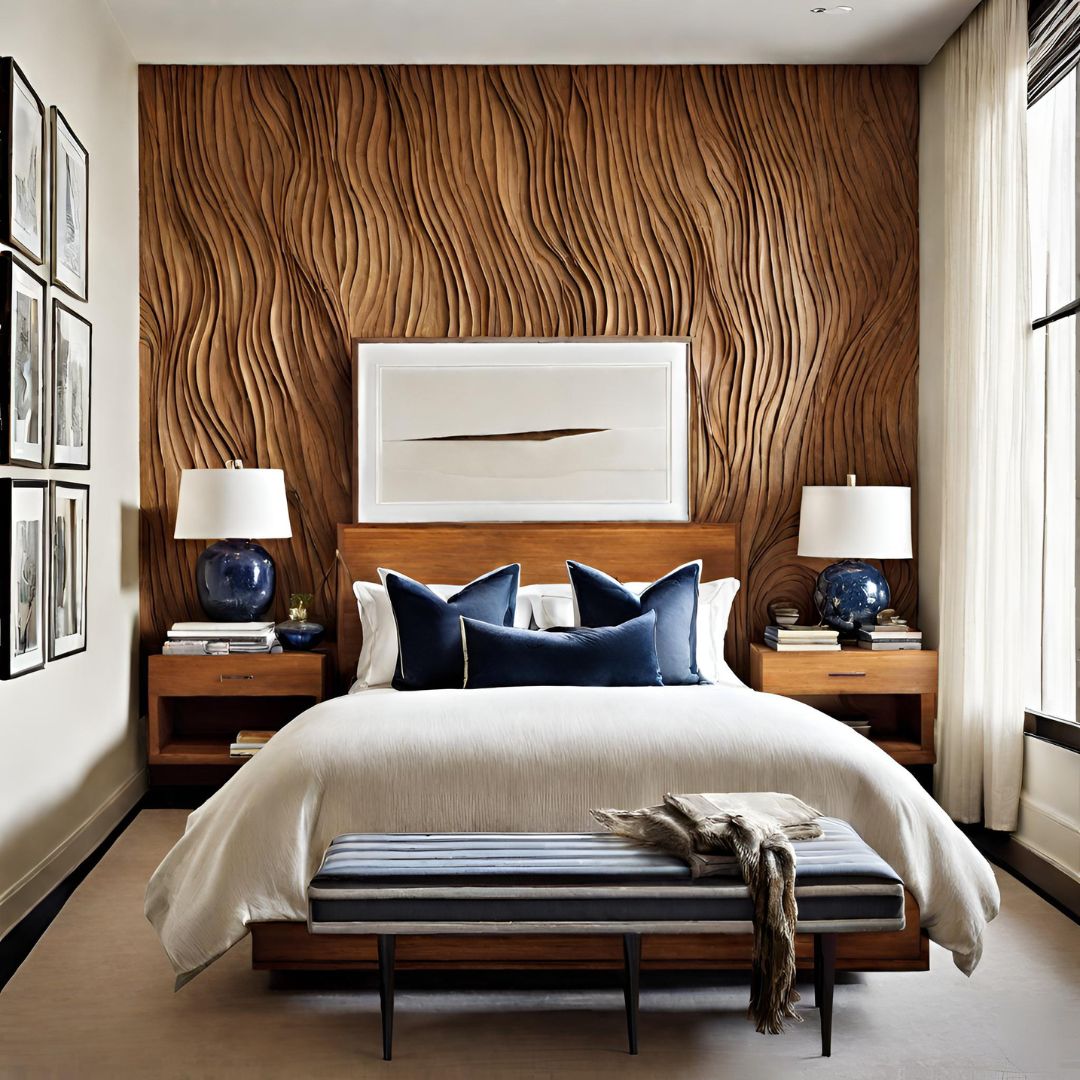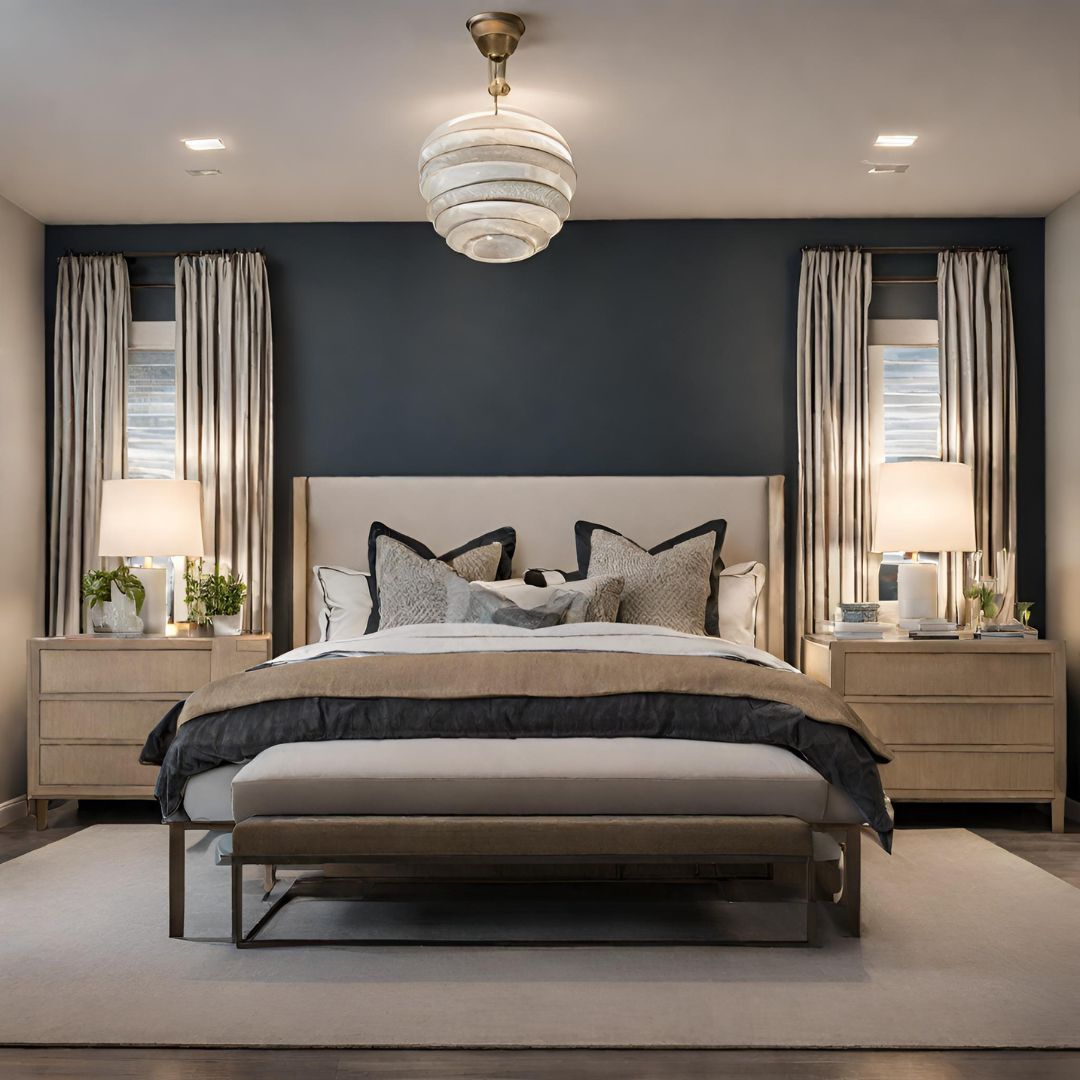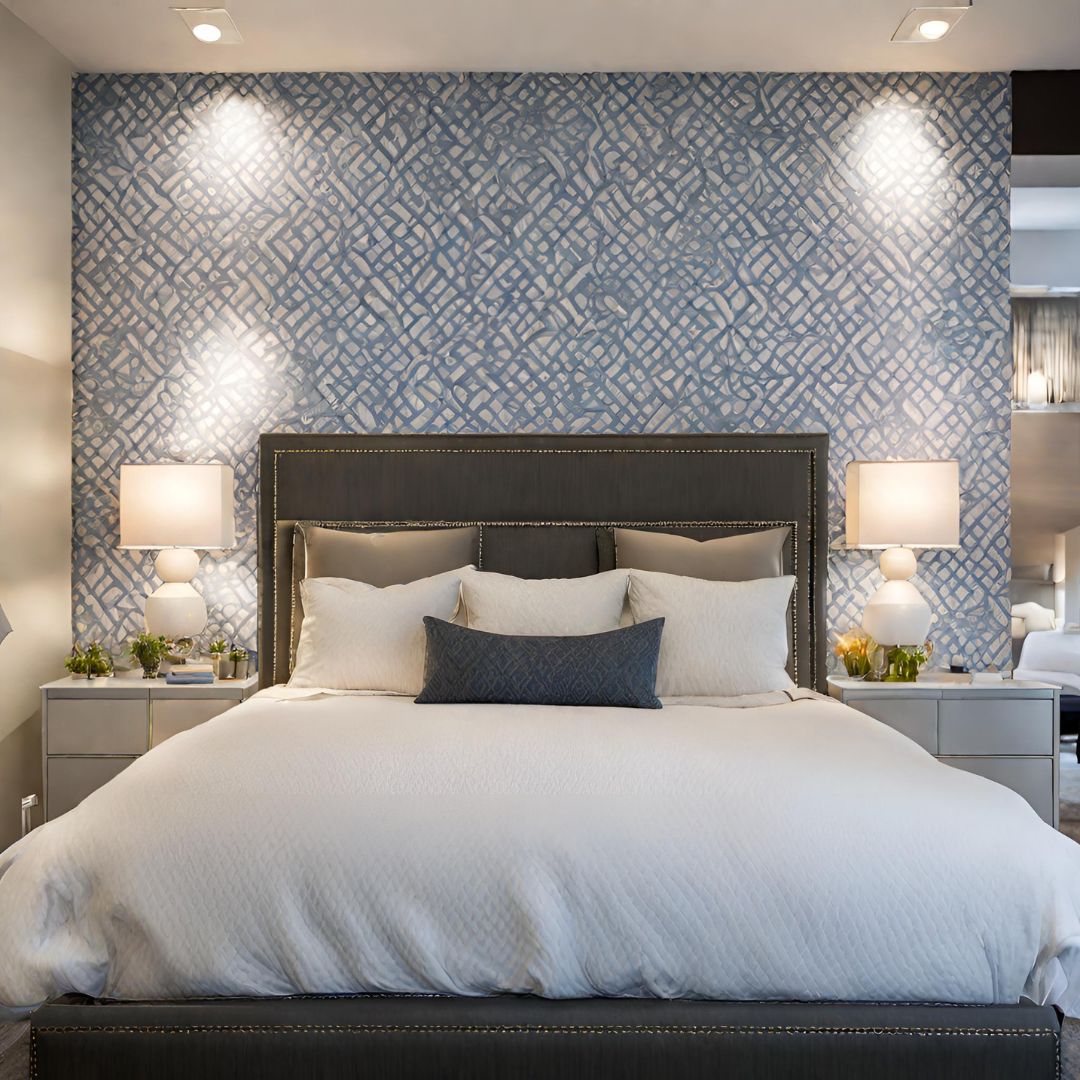Welcome to our comprehensive guide on how to choose the perfect accent wall for your home. This essential piece of interior design, when chosen correctly, can truly transform a room. From picking the perfect color and texture to deciding on a pattern or even wallpaper for your accent wall, every decision plays a crucial role in defining the overall aesthetic. This blog post will provide you with expert advice on the dos and don’ts of accent walls, including whether to go light or dark and how to use them to create focal points in a room. For those living in an open-concept layout, we also cover how to effectively use accent walls to make the space look bigger. We’ll even touch on the use of temporary wallpaper and the rules for having multiple accent walls. Whether you are a fan of bold colors or prefer something more subtle, we have something for every taste and style. Stay tuned for some exciting tips on styling accent walls to uplift your home décor.
The Basics of Choosing an Accent Wall
What Is An Accent Wall?
An accent wall, often referred to as a “feature wall,” is a design element that involves painting, paneling, or otherwise decorating one wall in a room differently than the others. The aim is to create a focal point and add visual interest to the space. This can be achieved through the use of vivid colors, eye-catching patterns, innovative textures, or even the application of wallpaper. An accent wall stands out and draws attention, inciting intrigue and giving a unique touch to the room’s overall decor. It’s a creative way of breaking the monotony and injecting personality into your living space.
Importance Of Accent Walls in Interior Design
Accent walls hold significant importance in interior design. They serve as a key tool for designers and homeowners looking to add a splash of style and personality to a room. By choosing one wall to highlight with a different color, pattern, or texture, you can create a focal point that instantly commands attention and engages the viewer’s eyes. The accent wall can also help to highlight certain architectural features, artwork, or important pieces of furniture. Not only do accent walls add visual depth and dimension, but they also allow for a bold expression of personal style without overwhelming the space. Additionally, they can influence mood and atmosphere, with different colors and materials evoking different feelings and responses. Thus, an accent wall can be both a practical and aesthetic addition that greatly enhances the overall design of a room.
The Basics of Choosing an Accent Wall
When it comes to choosing the perfect wall for an accent wall, there are a few guidelines to consider. First and foremost, the wall should be structurally sound and free from any major defects, as these will only be highlighted by the accenting. It’s also important to consider the layout of the room. Ideally, the accent wall should be one of the first walls you see upon entering the room, helping to draw the eye in. Walls with interesting architectural features, like fireplaces or built-in bookcases, often make for great accent walls as these features can be further emphasized. Conversely, walls with a lot of windows or doors may not be the best choice as the breaks can interrupt the flow of the pattern or color. Remember, the goal of an accent wall is to create a focal point, so choose a wall that lends itself to becoming a standout feature in the room.
Importance of Color, Pattern, and Texture Selection
The selection of color, pattern, and texture is an integral part of creating an accent wall. The color you select can dramatically alter the mood and feel of the room. Warm colors like reds, oranges, and yellows can create a lively and energetic atmosphere, while cool colors such as blues and greens can establish a calm and soothing effect. Neutrals provide a safe and versatile choice, allowing for a range of design options and color matching.
Patterns, on the other hand, can introduce an element of visual intrigue. From bold geometric designs to subtle textures, the right pattern can impart depth and character to your wall. Be mindful to choose a pattern that complements the room’s size and style, as overly complex patterns can make a small room feel cramped, while a large room may dwarf subtle designs.
Texture plays a significant role in accent walls as well. Whether it’s the raw appeal of exposed brick, the rustic charm of wood paneling, or the sophistication of metallic finishes, textural elements can add a tactile dimension to your accent wall. Besides aesthetic appeal, texture can also help to absorb sound and create a more serene environment.
The Role of Light and Dark Colors in Accent Walls
Light and dark colors each play distinct roles in accent wall design. Light colors, such as pastels or neutral tones, can help to make a room feel larger and more spacious. Light hues also tend to reflect more light, enhancing the natural brightness of a space. On the other hand, dark colors create a dramatic, intense ambiance and can make large, open spaces feel more intimate and cozy. They are often used to give an elegant, sophisticated edge to a room. Importantly, the choice between light and dark colors should not only reflect your personal style but also consider the room’s size, the amount of natural light it receives, and its primary function. For instance, a dark accent wall could work well in a bedroom or den, creating a sense of tranquillity, while a light-colored accent wall might be more suitable for a small bathroom or kitchen, contributing to an airy, open feel.
The Art of Accent Walls: Dos and Don’ts
Common Mistakes to Avoid When Designing an Accent Wall
When designing an accent wall, it’s important to avoid certain common pitfalls. One of the most common mistakes is neglecting to consider the room’s existing color scheme and overall design. Ensure that your accent wall complements rather than clashes with your current decor. Avoid overly loud and complicated designs that can overwhelm the space and create visual chaos. Instead, aim for balance and harmony.
Another mistake is poorly executing the DIY painting or wallpapering. If not meticulously done, imperfections such as uneven lines, bubbles, or smudges can become glaringly obvious and detract from the overall aesthetic.
Your accent wall should also be proportionate to the room’s size. A wall that’s too heavily decorated in a small room can make the space appear cramped and claustrophobic. On the other hand, a large room with an under-decorated accent wall can seem barren and uninviting.
Lastly, avoid using an accent wall to mask structural issues or damaged walls. An accent wall can indeed highlight a room’s features, but it can also draw attention to flaws. Hence, any repairs or maintenance should be performed before the accent wall is created.
By avoiding these common mistakes, you can ensure that your accent wall enhances your space and reflects your personal style effectively.
Best Practices for Creating an Appealing Accent Wall
Creating an appealing accent wall requires a keen eye for design and careful consideration of various factors. Here are some best practices to guide you through this process:
- ” value=”2″>Balance is Key: An accent wall should stand out, but not to the extent that it overwhelms the room. Striking a balance between the accent wall and the rest of the room is crucial. This can be achieved by tying in the color or pattern of the accent wall with other elements in the room such as furniture, rugs, or accessories.
- ” value=”6″>Professional Help Can Be Useful: If you’re unsure about your design or if the project seems too daunting, don’t hesitate to enlist the help of a professional. They can provide expert advice and ensure that the end result is both beautiful and professionally done.
Remember, an accent wall is a great way to express your personal style and add personality to your space. With careful planning and execution, you can create an accent wall that enhances your room and reflects your unique style.
Wallpaper and Temporary Solutions
Wallpaper can be a versatile and attractive option for creating an accent wall. Here are some of the benefits:
- ” value=”2″>Texture and Depth: In addition to color and pattern, wallpaper can also add texture and depth to a wall, enhancing its visual appeal. For example, textured wallpapers can create a tactile dimension that paint alone cannot achieve.
- ” value=”4″>Ease of Application and Removal: Many modern wallpapers are easy to apply and remove, making them a great choice for those who like to change their decor regularly. Some wallpapers are peel-and-stick or pre-pasted, simplifying the installation process.
Choose wallpaper carefully, considering not just the design, but also the quality and ease of maintenance. Whether you opt for a bold, geometric pattern, a beautiful floral print, or an understated texture, the right wallpaper can turn an ordinary wall into a stunning feature.
Exploring Temporary Wallpaper Options
Temporary wallpaper, often referred to as removable wallpaper, is a fantastic solution for those who want to experiment with different styles without a long-term commitment or for those living in rented spaces where permanent modifications may not be allowed. This option allows you to dramatically transform your space while offering the flexibility to easily remove or change the wallpaper at your convenience.
One of the biggest advantages of temporary wallpaper is its user-friendliness. Most temporary wallpaper options are peel-and-stick, enabling easy application and removal without leaving residue or damaging the wall. Furthermore, temporary wallpaper comes in a myriad of designs, colors, and textures, just like traditional wallpaper. From bold, graphic prints to subtle, textured designs, it caters to a wide range of aesthetic preferences.
However, while temporary wallpaper can be a convenient and versatile choice, it’s important to consider a few aspects before purchasing. The quality of removable wallpapers can vary, and cheaper options may not adhere well to the wall or could fade over time. Additionally, temporary wallpaper may not adhere well to textured or non-standard walls. Therefore, it is always recommended to purchase from a reputable supplier and ensure your walls are clean and smooth before application.
In summary, temporary wallpaper is a flexible, creative solution that has democratized the world of interior design by allowing individuals to customize their spaces with ease and affordability. Whether you’re looking to make a statement, establish a new aesthetic, or merely add a touch of charm to your space, temporary wallpaper opens a world of possibilities.
Using Accent Walls in an Open Concept Layout
Open-concept layouts are characterized by their spacious feel and seamless flow from one area to another. However, the challenge lies in defining separate spaces without the presence of walls. Accent walls can play a crucial role in achieving this division while maintaining the open appeal. Here’s how:
- ” value=”4″>Unify with Color: If your open layout includes areas with different functions, use a unifying color for your accent walls. This will create a cohesive look while still defining separate spaces.
Remember, when working with open-concept layouts, the goal is to strike a balance between defining spaces and maintaining the open feel. With a carefully chosen accent wall, you can achieve both of these objectives.
Creating a Focal Point with an Accent Wall
An accent wall can effectively serve as the focal point in any room, capturing attention and adding visual interest. Here’s how to utilize an accent wall to create a striking focal point:
- ” value=”2″>Feature Art or Collections: An accent wall can provide the perfect backdrop for showcasing artwork or collections. Whether it’s a large painting, a gallery-style arrangement of photos or prints, or a collection of unique artifacts, the accent wall can serve as a stage for these items to shine.
- ” value=”4″>Architectural Elements: If your room features distinctive architectural elements such as a fireplace, built-in bookcases, or a uniquely textured wall, consider making it your accent wall. The inherent character of these features will naturally draw the eye and enhance the overall aesthetic.
Remember, a focal point is all about creating visual interest that captivates the viewer and enhances the space. Choose elements that not only make the room visually appealing but also reflect your personal style and aesthetic.
Making a Statement with Bold Colors
Bold colors can be a powerful tool in interior design, allowing you to create stunning, unforgettable spaces. However, when used incorrectly, they can also overwhelm a room and make it feel cramped or chaotic. Here’s how to use bold colors for maximum impact:
- ” value=”2″>Bold Furniture: A piece of furniture in a bold color can add a pop of visual interest to a room. This might be a sofa in a rich jewel tone, a brightly colored armchair, or a dining table painted in a bold shade.
- ” value=”4″>Contrasting Colors: For maximum impact, opt for contrasting colors on the color wheel. For instance, a bold blue can look striking against a background of warm orange, or a vibrant green can pop against a background of deep red. However, it’s important to use contrasting colors sparingly to avoid creating a jarring effect.
Remember, bold colors can breathe life into a room, but it’s essential to strike the right balance. If used judiciously, they can turn a dull room into a stunning, visually appealing space that truly reflects your personality and style.
The Rules for Multiple Accent Walls
When designing with multiple accent walls, careful thought and planning are key. Here’s how to effectively incorporate multiple accent walls in your space:
- ” value=”2″>Balance: Balance is crucial when using multiple accent walls. They should work in harmony and not compete for attention. Use similar tones or patterns to tie them together for a cohesive look.
- ” value=”4″>Functionality: Each accent wall should serve a purpose, such as highlighting a particular architectural feature, defining a space, or serving as a backdrop for artwork or furnishings.




